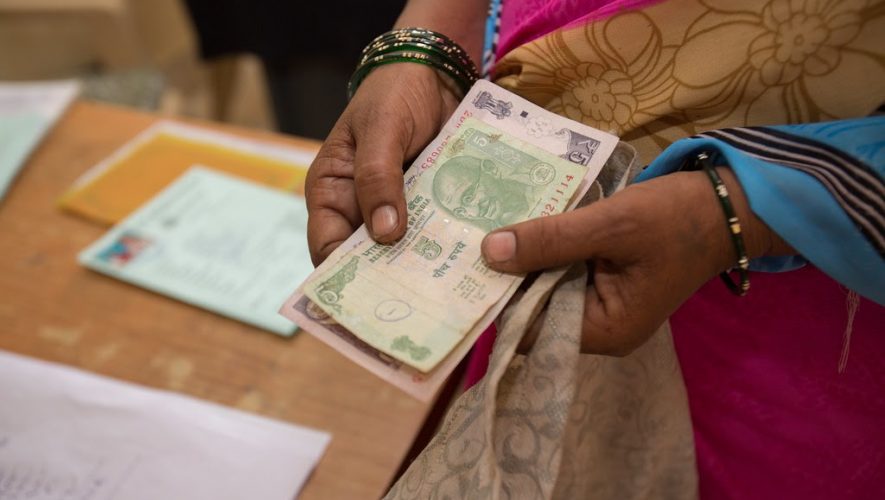The proverb “Give a man a fish, he’ll eat for a day. Teach a man to fish, he’ll eat for a lifetime” preaches temporary help aimed at long-term self-reliance. Microfinance attempts to follow this adage but consistently fails to deliver. That said, the opportunity it has provided to those on the cusp of or in the middle class cannot be marginalized.
Microfinance—small loans to low-income people who cannot access traditional financial services—emerged in rural Bangladesh during the 1970s. The program, spearheaded by Grameen Bank, provided loans to non-agricultural entrepreneurial ventures. These companies would establish community-based frameworks, developing the supply chain and changing long-term behavior. The concept inspired many countries to provide small loans for self-employment projects.
Microfinance intended to help the poor independently improve their financial circumstances, but as the program spread, its purpose became conflated with that of a poverty alleviation tool. While microfinance programs have spread globally, the World Bank specifically focuses on slums like Brazilian favelas in an attempt to provide financial products in these underserved communities.
After Plano Real quelled hyperinflation in the early 1990s, the Brazilian development bank Banco de Nordeste launched its first microfinance program in 1997. This program aimed to grant credit to informal entrepreneurs in Northeast Brazil and promote regional development without threatening privately owned financial intermediaries. Since 58 percent of the region’s population lives on less than two dollars per day, the program aimed to provide financial support and promote entrepreneurship to resource-depleted households.
Banks in Northeast Brazil do not usually loan to informal small businesses. International organizations launched CrediAmigo—Brazil’s primary microfinance program—to address this issue and invest in regional development. Once the program stabilized, its developers stopped funding it, using the initiative’s profits to finance it instead.
CrediAmigo provides loans, as well as other financial services—like free business training and consulting services—that reduce the risk of the loans. In the pilot stage, the program offered customers a ninety-day loan with a two-week payment plan. After the success of this initiative, the banks expanded the program from five to fifty branches, which increased the risk of its portfolio. As a result, the bank could not provide enough loans to its growing client base.
Between 1998 and 2001, the number of CrediAmigo’s clients grew by about 40 percent annually as interest rates remained relatively low. The program served more than two million clients and is revered as a successful microfinance initiative in a developing country, establishing it as one of the most prominent programs in Latin America.
That said, microloan programs like CrediAmigo fail to serve the communities where they are most needed. The few banks in Brazil offering microfinance are located in major cities; thus, few can access them. Slums lack microfinance programs because lenders perceive poor residents as a high-risk investment. Further, microfinance fails to provide the social capital necessary to propel people into the middle class.
Microfinance programs outside of Brazil have also failed time and time again to provide empirical evidence that core poverty is reduced. While microfinance does aid those on the cusp of escaping poverty, those deep in the poverty trap—due to the deprivation of socioeconomic, environmental, political, and cultural resources—cannot escape through microfinance, as it fails to adequately support the poor.
Existing businesses can grow, but those who truly have no economic prospects tend to allocate additional income towards personal consumption rather than business investment. This, coupled with microfinance’s demand exceeding its supply, results in a low penetration rate of eight percent, meaning few of those in need can access Brazilian microfinance. CrediAmigo’s low-interest rates and long maturities also undercut competing investors, decreasing the number of microloans available and blocking other investors from the market.
Microfinance was not created to solve poverty’s systemic causes. The private sector judges microfinance’s success on whether a loan is repaid, not whether it lifts a recipient out of poverty.
Despite CrediAmigo’s market success—which is determined by the quantity, risk, and profit of offered loans—there is insufficient evidence that microloans alone can alleviate systemic poverty in the aggregate. Throughout Latin America and particularly in Brazil, there is no semblance of a middle class. Brazil’s deep-seated wealth inequality underlies these microfinance programs. Promoting entrepreneurism in poor communities cannot address severe wealth inequality. Microfinance will always fail to address chronic poverty unless the program is coupled with measures to combat the systemic cultural, financial, and political conditions that suppress the poor.
State-owned microfinance programs in Brazil can be effective, but there needs to be more programs available for the poorest people. Most microloans are inaccessible to the poor there, but are available to those on the cusp of—or well within—the middle class. While microfinance provides an opportunity where there would otherwise be none, it does not do so for the people who need it most.
While microfinance helps maintain Brazil’s ever-shrinking middle class, it cannot combat poverty alone. It should be a supplement to, not a replacement for, welfare programs. Determining the success of microfinance and whether it should continue depends entirely on how its purpose is defined and how it is implemented.
Microfinance has been unparalleled as a means to provide entrepreneurial opportunities to those who would otherwise lack the means to start a business. There is no doubt that programs like CrediAmigo give opportunities to those who would otherwise lack access to financial institutions. But it fails to remedy Brazil’s greatest challenge: systemic poverty.



